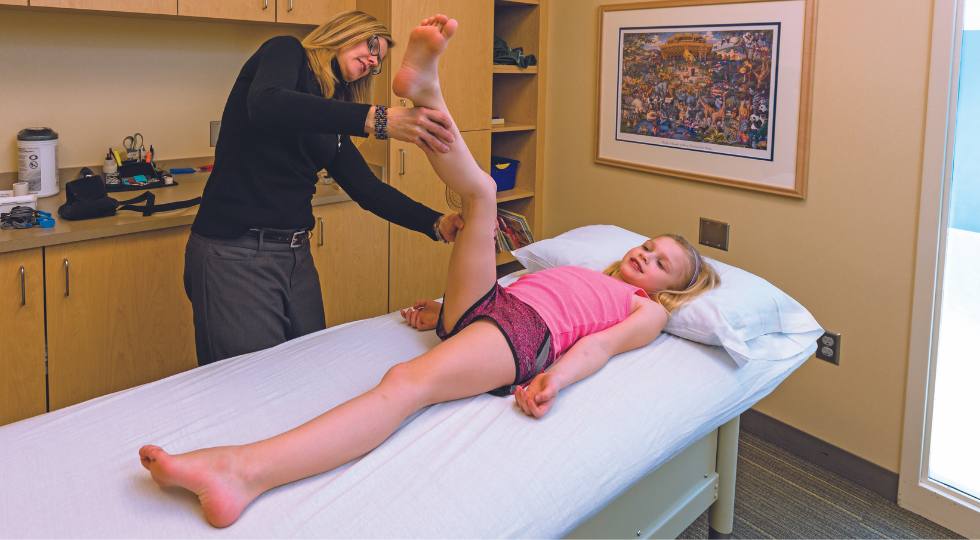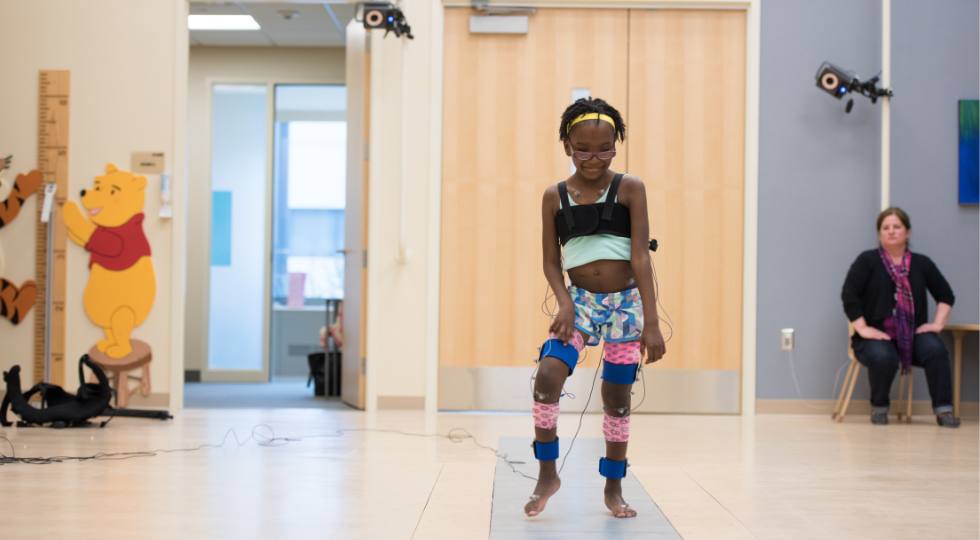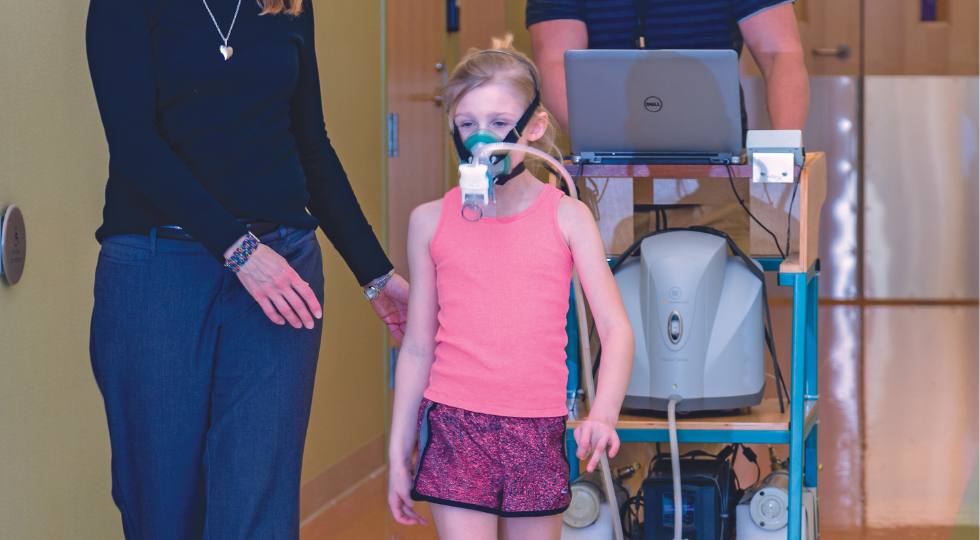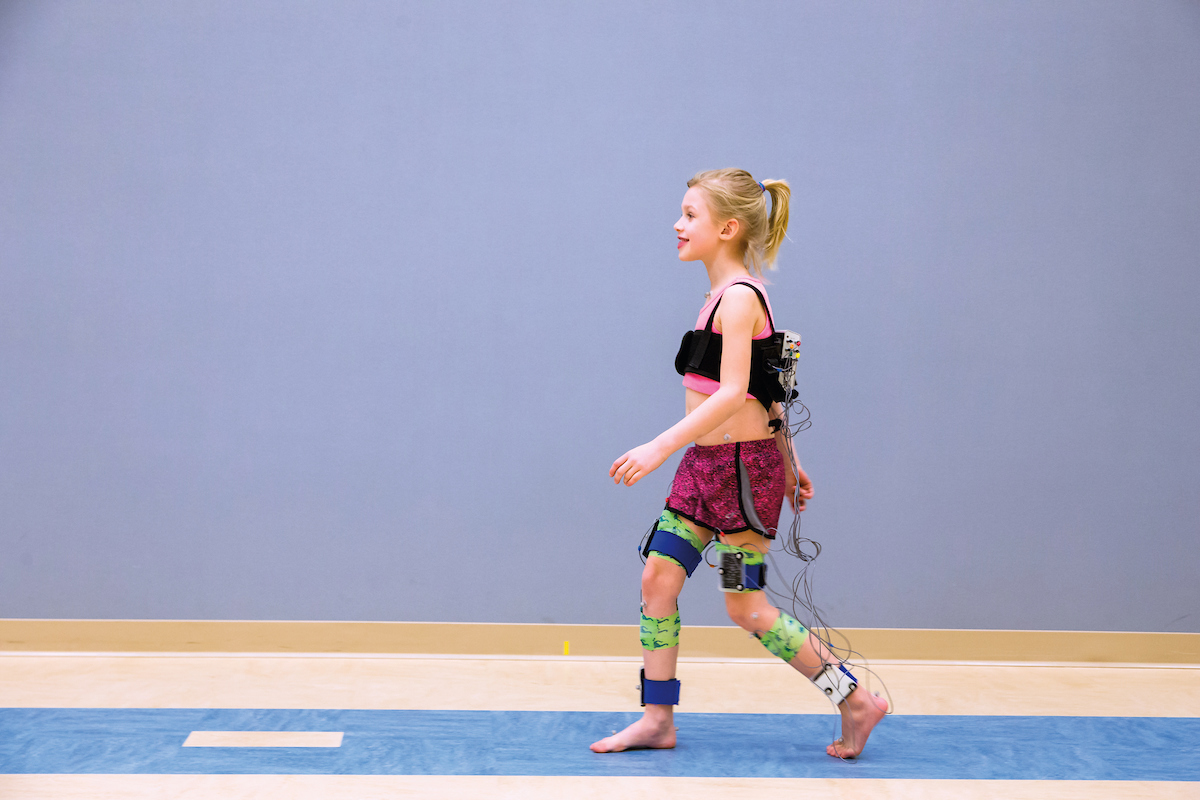Gait and movement analysis is done by a team of specialists at the James R. Gage Center for Gait and Motion Analysis at Gillette Children's, which is equipped with advanced video, motion capture, and other monitoring equipment. A typical visit lasts about two and a half hours and involves several steps.
Review helpful guidelines to prepare for a visit at Gillette.
What to Bring
- Loose-fitting shorts with an elastic waist. Girls should bring along tank tops.
- Braces and walking aids (such as crutches, walkers, or canes), if applicable.
- Shoes used for walking with and without braces.
Arrival and Check-In
Please arrive 15 minutes before your scheduled appointment to allow time for check-in. Check in at the fourth-floor registration desk, where you’ll be directed across the skyway and down the elevator to the James R. Gage Center for Gait and Motion Analysis. Be sure to ask to get your ramp ticket stamped for reduced parking.
For directions and parking information, visit Directions and Locations.
Consenting to Observation
Gillette is a teaching facility, and we often have requests from visitors to observe gait analysis testing. We always ask permission before any visitors are allowed to be present during gait analysis testing. If you know in advance that you or your child would not be comfortable with observers, please let us know so that we can plan visitors for different times.
Discover how research benefits ongoing gait and motion analysis studies at Gillette.
First, your child walks across the room while being videotaped from two angles. This visual record helps providers understand walking difficulties and provides a reference point for measuring treatment outcomes.
A physical therapist assesses your child’s strength, range of motion, bony alignment, levels of spasticity, and motor control. These measurements provide important information when analyzing the gait data to plan treatments and help measure the effectiveness of treatment.

Before motion capture and muscle monitoring begin, a physical therapist applies small reflective balls and sensors to your child’s body. Special cameras track the movement of the reflectors as your child walks through the gait lab—recording when muscles are active and at rest. Instruments in the floor measure the force produced by the muscles at the joints as your child walks.

Your child walks across a special mat that senses the pattern and distribution of pressure under their feet. This data helps to highlight patterns, forces, and pressures that cameras can’t capture.

Your child wears a mask that covers the nose and mouth to help measure how much energy is required to walk. While wearing the mask to measure the amount of oxygen inhaled and carbon dioxide exhaled, your child first sits for a rest period of ten minutes and then walks for six minutes.
A cart with mobile monitoring equipment will follow behind your child while they walk during this test.

In very rare circumstances, fine wire EMG monitoring of a specific muscle may be required. This is a very specific test. Historically, this procedure has been performed for 1 out of every 200 patients seen in the gait lab. For a Fine Wire EMG assessment, a pair of very small wires – each about the same thickness as a human hair – are placed into the desired muscle using a needle. The needle is removed, and the wires remain in the muscle to measure its activity during walking. If you would like to know more in advance of your visit, please contact the gait lab.
Once your child has completed the assessment, the data is processed and a series of graphs showing movements, muscle activity, force production, and energy use are created—see sample graphs from a gait and motion analysis.. A physical therapist analyzes this information and then discusses it with an orthopedic surgeon and a biomedical engineer.
Next, this “interpretation team” generates a list of problems and potential treatments—and shares the information with your specialty physician. Your family meets with your specialty physician (usually within four weeks of the analysis) to discuss the results.
After some time, your child might be asked to come back for follow-up testing. Repeated analyses can help determine whether your child has changed after treatment or with time.
This information is for educational purposes only. It is not intended to replace the advice of your health care providers. If you have any questions, talk with your doctor or others on your health care team.
If you are a Gillette patient with urgent questions or concerns, please contact Telehealth Nursing at 651-229-3890.
 Home Page
Home Page

